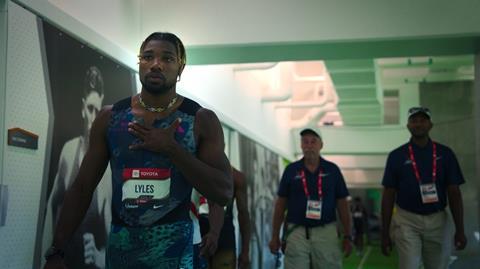Jesse Shemen, CEO of Papercup, believes AI could make the competition more widely available

Sport transcends geographical boundaries. There is no better example of this than the Paris Olympics. The 204 competing nations represent every corner of the world, meaning every corner of the world is a new fanbase to connect with. By embracing AI, this year’s Olympics is better connected than ever before.
Sports consumption has changed dramatically over the last two decades. Gone are the days when fans were limited to local broadcasts or struggled with subtitles to follow their favourite teams or athletes. Today, sporting institutions recognise the immense potential of digital platforms to cultivate global fanbases.
The numbers speak for themselves: there are more NBA fans in China than in the United States, claims S&P Global, and Real Madrid boasts a worldwide fanbase seven times larger than Spain’s entire population, according to its social media following. They need convincing, personalised ways to make their content accessible to these fans, wherever they may be.
Athletes and teams rely on showcasing their personalities to build stronger connections with fans. Relatability is the name of the game, and there is no better way to be relatable than to be informal on your YouTube channel or TikTok and join in with fan chats or offer tantalising titbits of life behind the ropes.
But the space is crowded—and for some athletes, every single fan counts. For athletes in little-known sports, the Olympics is the greatest opportunity to shine when the lights are brightest and create a lasting fanbase. We are already seeing this with Team USA partnering with Google and its AI functions to uncover and share their athletes’ stories.
Take Ilona Maher, who has turned her appearance at the Rugby Sevens in Paris into 1.6M TikTok subscribers. Maher may not have the medal haul of fellow Team USA athlete Katie Ledecky, but through her investment in her relationship with her fans she has a social media presence far superior to the swimmer.
In cases like these, athletes must use every element at their disposal to form an emotional connection with prospective fans who may be sitting halfway across the world – including language.
Using AI tools to dub verbal audio content, such as social media videos, between languages, in particular, drives engagement by encapsulating the essence of a moment, athlete, or team. It can create a one-to-one relationship with the fan. This is what turns a single moment in the limelight into a much longer relationship and profile.
Behind-the-scenes vlogs and bonus content are important, but the main attraction is still the sporting moments. How much of the build-up experience, the chat in the stands, the roars of the gallery, is confined to those in the Stade de France or on the banks of the Seine? Digital tools can leverage this hype and spread it to a far wider international audience.
This is already being seen through partnerships between leading tech companies and media broadcasters. Google Gemini is playing a large part in NBC’s broadcasting of Paris 2024 in the form of ‘AI Michaels’—AI-generated recaps from an avatar of legendary sportscaster Al Michaels. Some of these new features will fade in time, but some could go on to shape the future of TV’s most valuable broadcasts.
AI can make sports even more instant and global. Bonds can and will be made deeper as stars from far-flung places speak to their audiences as seamlessly in their audience’s language as their own. Moments can be made bigger as iconic events can be heard worldwide with the same lines and build-up, adding to our collective experience. 204 distinct, sovereign nations are currently staying in Paris, divided by culture and language. The Olympics cannot be made more international, but it can be made more accessible.

Jesse Shemen is CEO of Papercup







No comments yet